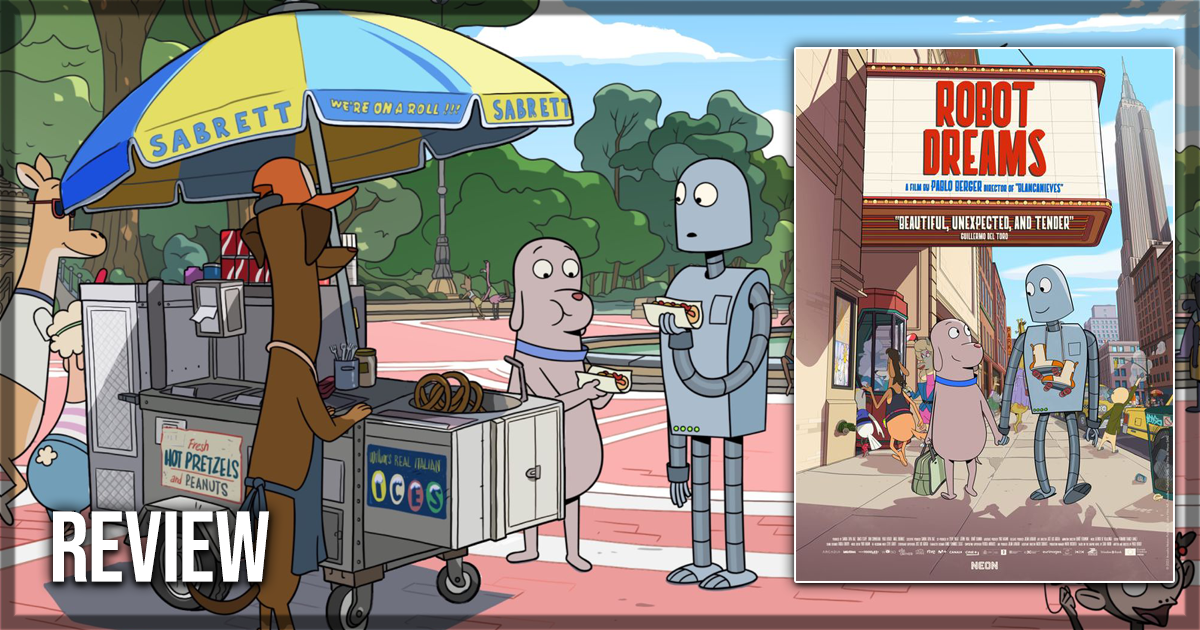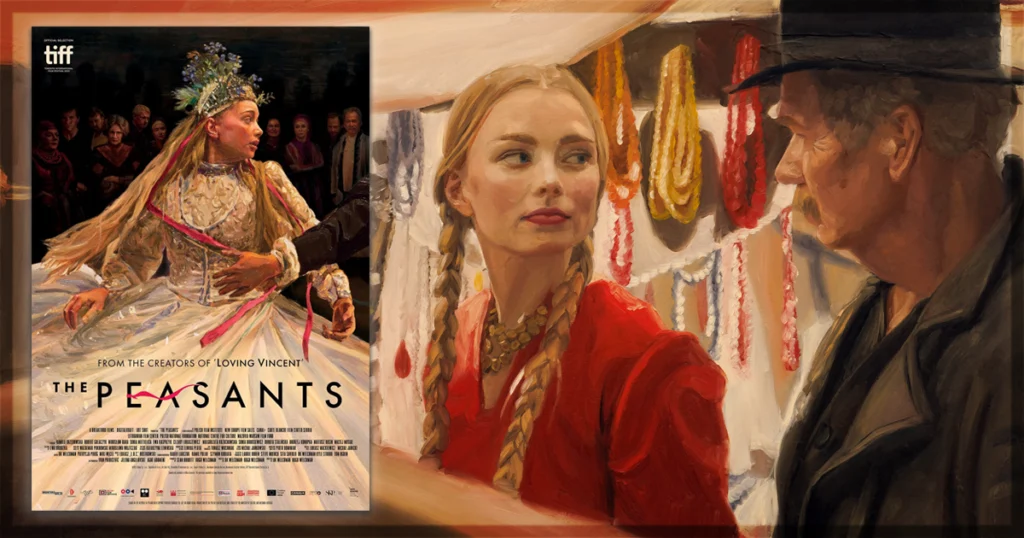Isaac Asimov was a Russian science fiction writer who died in the early 1990s. He wrote extensively about the future and discussed AI and robots in many of his stories. Much of his work was written before our modern world of robot vacuum cleaners and self-driving cars, but much of Asimov’s work, including a short story called Robot Dreams, was theoretical and speculated on what the future of technology might hold. The book Robot Dreams inspired the movie I, Robot starring Will Smith a couple of decades ago, but the new film distributed by Neon with the same name, Robot Dreams, dabbles in Asimov’s speculative ideas about what a Robot intelligence might “dream” about.
This film is a relatively simple story of a dog searching for a friend, so he purchases a robot and assembles it. But all the adventures and experiences the dog and robot have mirror real life and the course of many adult relationships with all too much familiarity. The film portrays these events in a way that fills your heart with joy at times while simultaneously making you want to burst into tears. While the ending may leave some kids a bit despondent, the very touching and sentimental Dreams of this Robot make this film a very worthy addition to this year’s Oscars Best Animated Feature slate.
The story of Robot Dreams
We get an opening shot of the Brooklyn Bridge at night, and we see the two towers lit up and realize we’ve traveled back in animated time. Eventually, we understand it’s the 1980s. The scene cuts, and we’re taken to a street corner where we can make out the words “East Village.” But then we’re introduced to Dog, as he sits alone in his apartment, laying back looking bored on his couch, each paw holding a controller for the video game Pong. The little white dot bounces between the paddles until he finally misses one, and the GAME OVER sign flashes onto the screen.
Dog goes to his freezer and retrieves a microwaveable meal of macaroni and cheese, which he watches as it bubbles while it warms. He turns the TV back on and shuffles boringly through the late-night sitcoms and infomercials before his attention is drawn outside his window and across the alleyway to an adjacent apartment. He sees a cow and a deer sitting on a couch watching TV. They’re cuddling and feeding each other popcorn.
Suddenly, Dog’s TV flashes yellow as some big blue words fly onto the screen, asking, “Are You Alone?” and the dog immediately turns the volume up. As the screen is obscured from our view, we watch as Dog watches intently, then as a slow smile spreads across his face, we see him reaching for the phone with the words “order now” partially visible onscreen. As Dog lies in bed, smiling in anticipation, the scene cuts and the film’s title fills the screen.
The mail truck holds potential in Robot Dreams
The following day, Dog is up bright and early; we see him with his head out the window, excitedly watching for the mailman to arrive. Within these first few minutes of the film, we notice virtually no spoken dialogue by any of the characters, just some simple sounds and background noises. The film relies almost exclusively on its visual storytelling, which, alongside its animation, is simple, precise, and quite often profound. When the mail truck finally pulls up outside, the dog’s tail begins wagging, and after signing a form, the ox mailman plops a large box onto the floor of Dog’s apartment.
As Dog unpacks the various parts and begins assembling his purchase, some pigeons gather outside his window, looking at this project with curiosity and suspicion. After the main body has been put together, he pulls the arms and legs from the box and attaches them. Once he puts the head on and turns the robot on, the robot’s fingers begin moving, and it slowly begins to sit up and come to life, like something akin to Frankenstein getting first hit with electricity. As the Robot stands up, much to the distress of the petrified pigeon onlookers, Dog sips his Tab soft drink until the robot turns his head and smiles warmly, looking at Dog.
Dog smiles back and offers Robot a sip of his drink, so Robot reaches across the room and takes a sip of the soda. Dog and Robot then hit the streets of New York. Robot learns about the wide variety of characters as they pass by stores, take the subway, and eventually roller skate together in Central Park while somebody turns up September by Earth, Wind & Fire on a boombox. Alas, one day, though, after playing at the beach, Robot’s batteries run down, and Dog is forced to leave him behind, thus beginning a bit of a star-crossed friendship tale as they try to get back together.
Pablo Berger’s vision with this film
When I took my boys to see Robot Dreams in the theater, as soon as the film ended and the director’s name appeared in the credits, my older son asked rhetorically, “Pablo Berger, why did you end it like that?“. This not only made me laugh out loud but also clued me into the frustration that younger audiences will feel upon the film’s conclusion. Without straying into spoilers too far, let it be said that the happy and upbeat finale didn’t give the audience exactly what they were hoping for, what every Disney film would’ve given you. For this, I salute Mr. Berger, and I’m so happy to see this film receiving Oscar love over so many middling animated films like Disney’s Wish. Because of this, however, the film may work just a smidgen better for adults than it does for younger audiences.
The direction and dialogue-devoid screenplay by Berger are two bright spots on which this movie hangs its hat. As I mentioned, of all the animated films nominated for Animated Feature this year, Robot Dreams is by far the simplest in its presentation and stylization. The animation is very subtle, unflashy work, yet it is so cute and simple that even very young children would enjoy it and easily follow the film’s narrative. But the fact that this film held my boys’ interest despite not having their favorite Super Mario or Ninja Turtle characters onscreen is a testament to how well-constructed and paced it is.
Final thoughts on Robot Dreams
At just over an hour and forty minutes, this film flows by as breezy as a Sunday afternoon in autumn. Although the dreams that Asimov and I, Robot envision are much more disconcerting, the ones pondered in this animated film are much more child-friendly and will absolutely charm the socks off of most viewers.
Robot Dreams won’t be widely available until May when it is released in theatres here in the US, but general audiences and cinephiles should make sure to catch this one when it finally drops. The Dreams, emotions, relationships, and losses of this animated dog, Robot, and the friends they meet along the way, well, it all feels far too human.
Robot Dreams will be in theaters on May 31, 2024.
Are you excited for Robot Dreams to come to the big screen? Are you an Asimov fan? Let us know on X @MoviesWeTexted.
You might also like…
‘The Peasants’ Movie Review: Polish Animated Drama Fit for a King


